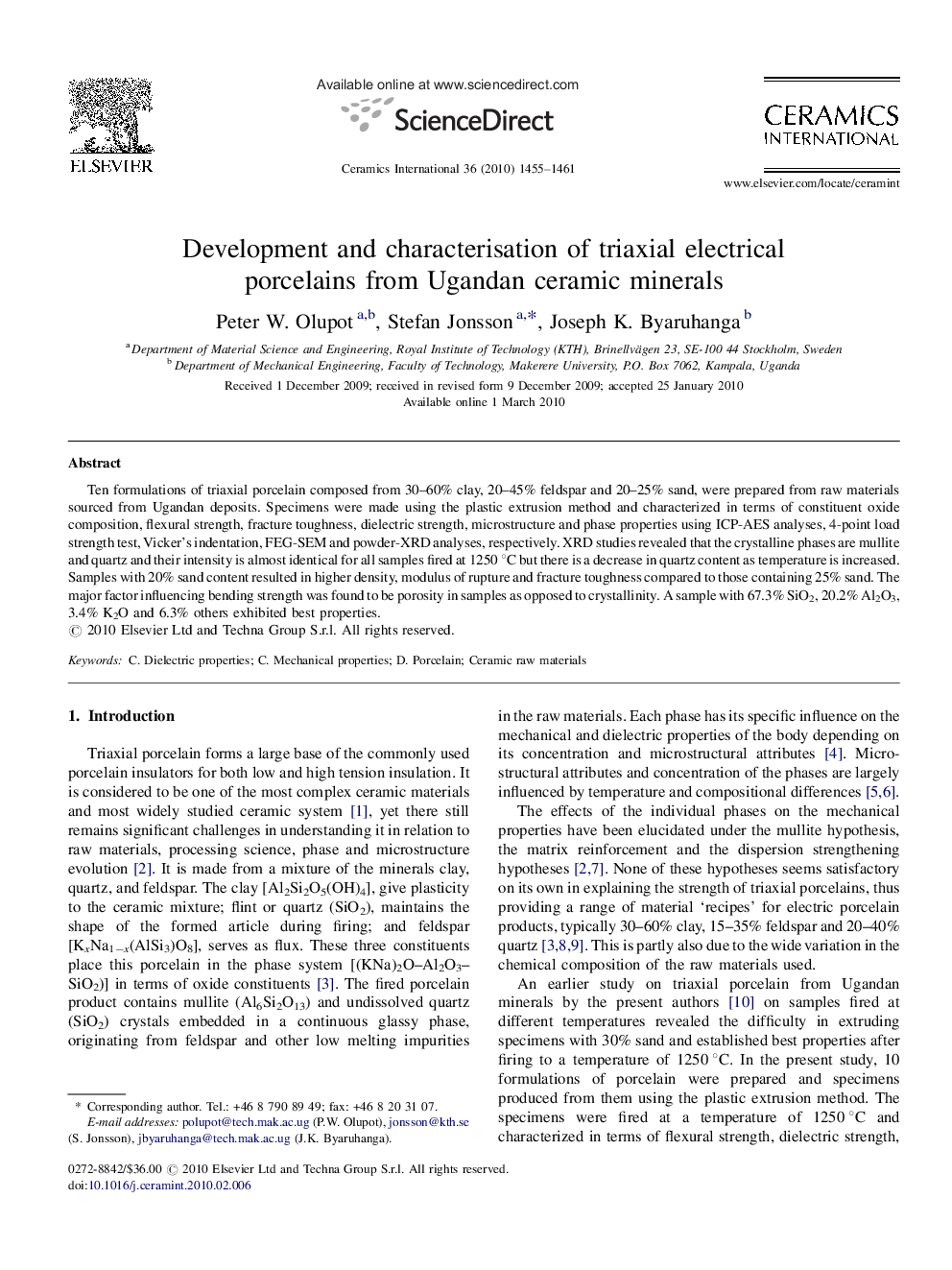| Article ID | Journal | Published Year | Pages | File Type |
|---|---|---|---|---|
| 1463944 | Ceramics International | 2010 | 7 Pages |
Ten formulations of triaxial porcelain composed from 30–60% clay, 20–45% feldspar and 20–25% sand, were prepared from raw materials sourced from Ugandan deposits. Specimens were made using the plastic extrusion method and characterized in terms of constituent oxide composition, flexural strength, fracture toughness, dielectric strength, microstructure and phase properties using ICP-AES analyses, 4-point load strength test, Vicker's indentation, FEG-SEM and powder-XRD analyses, respectively. XRD studies revealed that the crystalline phases are mullite and quartz and their intensity is almost identical for all samples fired at 1250 °C but there is a decrease in quartz content as temperature is increased. Samples with 20% sand content resulted in higher density, modulus of rupture and fracture toughness compared to those containing 25% sand. The major factor influencing bending strength was found to be porosity in samples as opposed to crystallinity. A sample with 67.3% SiO2, 20.2% Al2O3, 3.4% K2O and 6.3% others exhibited best properties.
